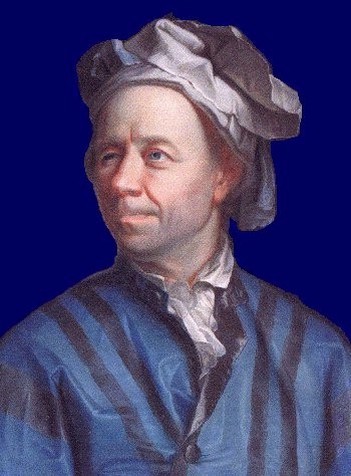
Euler had diplopia due to his right eye strabismus, which led to progressive atrophy of the right optic nerve and blindness after the left eye cataract surgery. Therefore, the cause of the aneurysm remains elusive, as does the connection to his severe febrile illness at age 28.Ī final observation regarding Euler's blindness and his aneurysm has to be made.

At all ages the prevalence of cerebral aneurysms tends to parallel the height of the blood pressure, but it seems unlikely that Euler lived 45 years with severe hypertension. A cerebral aneurysm could also explain the fatal brain hemorrhage. Aneurysms from the infraclinoid carotid artery or the basilar artery also cause a III cranial nerve palsy but are much rarer. An aneurysm of the right posterior communicating artery of the circle of Willis, directly compressing the nerve, could explain his strabismus and right eyelid ptosis. However, most frequent residual neurological dysfunction is a VI, not a III, cranial nerve palsy, and SCST was almost always fatal in the preantibiotic era. The classic signs of SCST are ptosis, protopsis, chemosis, and deficits of cranial nerves III, IV, and VI. What caused the eye problem and was it related to his febrile illnesses? A septic cavernous sinus thrombosis (SCST), perhaps from paranasal sinusitis or a stye, might explain Euler's fever and right eye abnormalities. The original Euler portrait hangs at the Kunstmuseum Basel, Switzerland.Įuler died suddenly of brain hemorrhage on 18 September 1783, shortly after a family lunch and while discussing the orbit of Uranus with his fellow academicians Lexell and Fuss. Swiss postage stamp depicting a 1753 portrait of Leonhard Euler (magnification) by Emmanuel Handmann. This apparently earned him the nickname of the “cyclops.” In 1766, a cataract formed on his good left eye, which was unsuccessfully operated on in 1771, rendering Euler virtually blind. A 1733 portrait of a young Euler by Brocken does not show any eye abnormality, but a 1753 portrait by Handmann shows that Euler had a right eyelid ptosis and divergent strabismus (Figure 1), implying that the problem developed within that 20-year interval.

Three years later, he suffered a relapse and began losing the sight in his right eye. Euler was in excellent health until 1735, when he was stricken by a mysterious and near-fatal febrile illness. Euler, born in Basel, Switzerland, spent most of his adult life working in St Petersburg, Russia, under the protection of the Russian czars. T o the E ditor-Leonhard Euler (1707–1783) was probably the greatest mathematician of the 18th century, and a pioneer and innovator in many different scientific fields ranging from fluid dynamics to optics and astronomy.


 0 kommentar(er)
0 kommentar(er)
